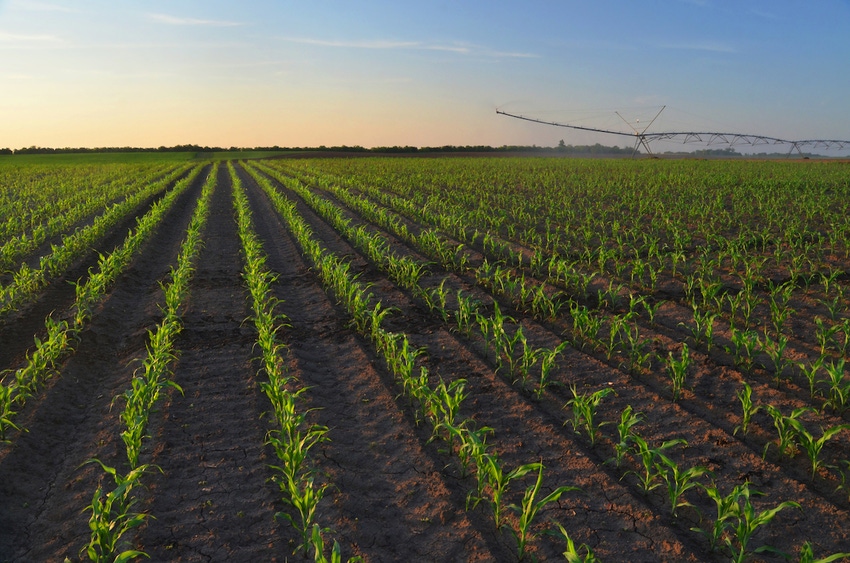June 16, 2016

Late-planted corn and soybean crops may be reaching a critical stage of development just as the weather is turning drier and could require earlier irrigation, says Lyndon Kelley, irrigation specialist for the Purdue and Michigan State Extension services.
Wet spring weather in much of the Midwest delayed cover crop removal, tillage and planting by as much as two weeks, meaning that instead of seedlings coming up during the spring rainy season, they are already encountering drier, summer-like conditions, Kelley said.
Farmers in some parts of the state should be irrigating now to ensure optimal germination, he added.
“Typically, our crops would be about two weeks further ahead, so now we’re trying to grow younger crops in the drier time of the year,” Kelley said. “Even in an average year, midsummer is the driest point of the growing season and that low point is going to hit us at a more crucial stage of development this year.”
Remaining cover crops could drain even more moisture from the soil, Kelley said. Cereal grains and annual rye grasses use more moisture than corn or soybeans. The moisture is typically replaced by rain after the cover crops are removed by tillage. But this did not happen in some areas, Kelley said, particularly where field operations were significantly delayed.
In order to replace moisture lost during the tillage process, farmers should apply one-half to three-quarters of an inch of water per application, which will wet the soil down to 6 inches, the minimum depth needed to keep roots growing into moisture, Kelley said. If no rain has fallen since removing the cover crop, 1-1.5 inches may be needed to replenish the soil moisture in the future root zone.
Some soils may form a crust if the soil surface dries too quickly, possibly preventing seedlings from penetrating the surface, Kelley said. A small application of 2/10-3/10 of an inch of water may soften the soil enough to allow seedlings to emerge.
Farmers have several tools available to help them determine whether their crops need irrigation, and how much. A quick test is to probe the soil below the roots.
“Soil below the roots should be able to form and hold a ball when squeezed if adequate moisture is present,” Kelley said. A U.S. Department of Agriculture guide to evaluating soil with the “hand feel method” is available online.
A more precise system of computation, the checkbook irrigation method, treats soil moisture content like a bank account.
“This method uses analogies to help calculate irrigation needs – rainfall and irrigation applications are represented by deposits, and evaporation and transpiration by withdrawals,” Kelley said. “Water added beyond capacity is ‘lost to the account.’”
Get more information about checkbook irrigation and other scheduling tools.
For more information, contact Kelley at 269-467-5511 or [email protected].
You May Also Like




